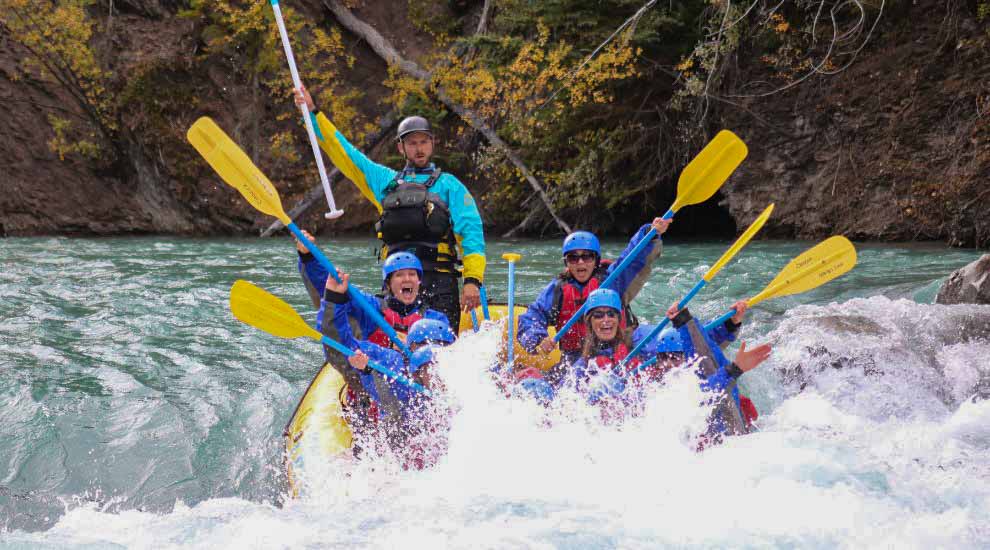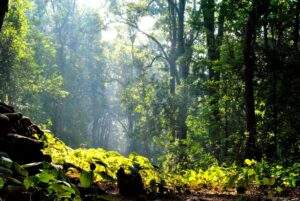River Rafting in Rishikesh: The Complete Guide for Beginners

Prepare to embark on a heart-pounding adventure through the mighty rapids of the Ganges. Prepare for a rafting ride through thrilling rapids that promise an adrenaline rush. But before we dive into the thrilling turns of the swift currents of the Ganga, let us first equip you with the necessary knowledge to plan the perfect trip for your river rafting in rishikesh. Experience a race to conquer challenging rapids that promise an adrenaline surge. From choosing the right gear to understanding safety measures, we’ve got you covered. Find the ideal time to maximize the thrill and stunning views that come with this adventurous getaway. So, get ready and let the Ganga be your guide for an unforgettable rafting experience!
River Rafting in Rishikesh: The Basics
River rafting is often known as white-water rafting. It is an exhilarating sport involving navigating a raft through turbulent river waters. In Rishikesh, the Ganges River offers an ideal setting for this adventure, with its varying grades of rapids making it suitable for both beginners and seasoned rafters.
Choosing the Right Time to Go
Selecting the right time for your river rafting adventure is crucial. The best time to visit Rishikesh for rafting is during the post-monsoon and pre-summer months. The water levels are proper for an exciting yet safe experience during these periods.
Essential Gear and Safety Measures
Before hitting the rapids, it’s imperative to have the right gear. It includes a life jacket, helmet, wetsuit, and paddle. Professional guides will provide all necessary equipment and conduct a safety briefing to ensure you’re well-prepared.
As a beginner, it’s essential to understand the significance of following expert advice and adhering to safety protocols. Writing for “River Rafting in Rishikesh: The Complete Guide for Beginners” emphasizes the importance of responsible rafting and ensures a memorable experience for all.
River Grading: Know Your Rapids
Rapids are swift and turbulent river sections found due to variations in slope. The Ganga, spanning 2400 meters, boasts numerous rapids categorized into five levels. Here are 16 significant rapids in and around Rishikesh:
- Grade I Rapids: Easiest, with gentle currents and low risk.
- Grade II Rapids: Clear passage with well-separated obstacles for easy navigation.
- Grade III Rapids: Technical, requiring good judgment from the guide.
- Grade IV Rapids: Thrilling, yet tricky. Waves are powerful enough to capsize rafts.
- Grade V Rapids: Potentially dangerous. Only the fortunate navigate without mishap.
- Grade VI Rapids: Considered suicidal due to extreme difficulty.
Those less confident in swimming should avoid Grade III and higher rapids in Rishikesh for safety.
Conclusion
In short, embarking on a river rafting expedition in Rishikesh promises a unique adventure. It seamlessly weaves the excitement of conquering challenging rapids with the mesmerizing splendour of the river Ganga. With rapids graded for varying skill levels, this experience caters to novice and experienced rafters, ensuring an inclusive adventure.
Optimum conditions emerge after the monsoon and before summer, setting the stage for this heart-pounding endeavour. Equipped with the proper gear and knowledge, you are ready for a trip filled with exhilarating moments and unforgettable memories.
The important thing is that responsible rafting protects the participants and preserves this majestic river’s natural wonder. So, buckle up, get moving, and let the River Ganga take you on an unforgettable journey!
FAQs
What Should I Wear for River Rafting?
For river rafting, wearing comfortable swimwear or quick-dry clothing is recommended. Avoid wearing cotton as it tends to get heavy when wet. Remember to bring a pair of secure, fast-drying shoes.
Is River Rafting Safe for Non-Swimmers?
Yes, river rafting is generally safe for non-swimmers. However, it’s imperative to wear a life jacket at all times. Professional guides are trained to handle emergencies and will ensure your safety throughout the journey.
Are There Age Restrictions for River Rafting?
Most rafting operators in Rishikesh have a minimum age requirement, typically around 14 years old. This ensures participants have the physical strength and coordination needed for rafting.
Can I Bring My Camera or Phone?
While capturing memories is essential, leaving expensive electronic devices behind is advisable. If you bring a camera or phone, ensure it’s securely stored in a waterproof case.
What Should I Do in Case of an Emergency?
In the rare event of an emergency, follow your guide’s instructions without hesitation. They are trained to handle various situations and will ensure your safety.
What is river rafting, and how does it work in Rishikesh?
River rafting is an adventurous water sport where a group of people paddle an inflatable raft through the turbulent waters of a river. In Rishikesh, it typically takes place on the Ganges River. Experienced guides lead the expedition, ensuring safety and providing instructions. Rishikesh offers different stretches of the river, ranging from mild to highly challenging, catering to various skill levels.
When is the best time for river rafting in Rishikesh?
The best time for river rafting in Rishikesh is usually from late September to mid-June. During this period, the weather is pleasant, and the water levels are conducive for rafting. It’s recommended to avoid the monsoon season (July and August) as the river can become dangerously high.
What are the different grades or levels of river rapids in Rishikesh?
Rishikesh offers rapids ranging from Grade I to Grade IV. Grades I and II are considered uncomplicated and are suitable for beginners. Grade III rapids are moderately tricky and require some experience. Grade IV rapids are highly challenging and require a good level of expertise.
How long does a typical river rafting trip in Rishikesh last?
The duration of a river rafting trip in Rishikesh depends on the chosen stretch of the river. It can range from a couple of hours to a full day. Shorter trips cover around 9-12 kilometres, while longer trips can cover up to 36 kilometres.






